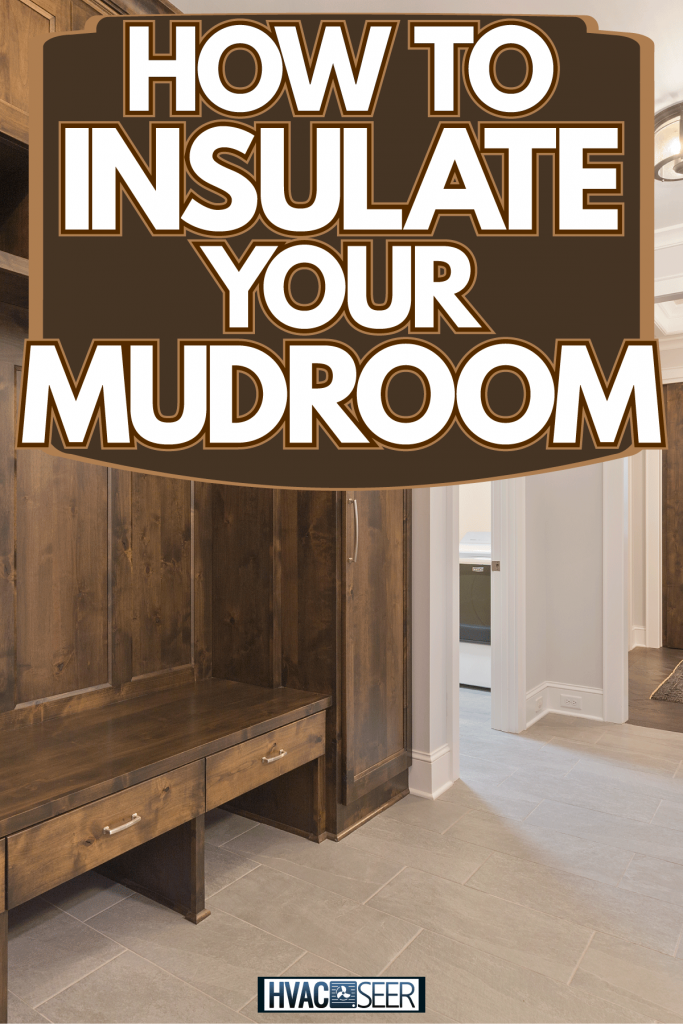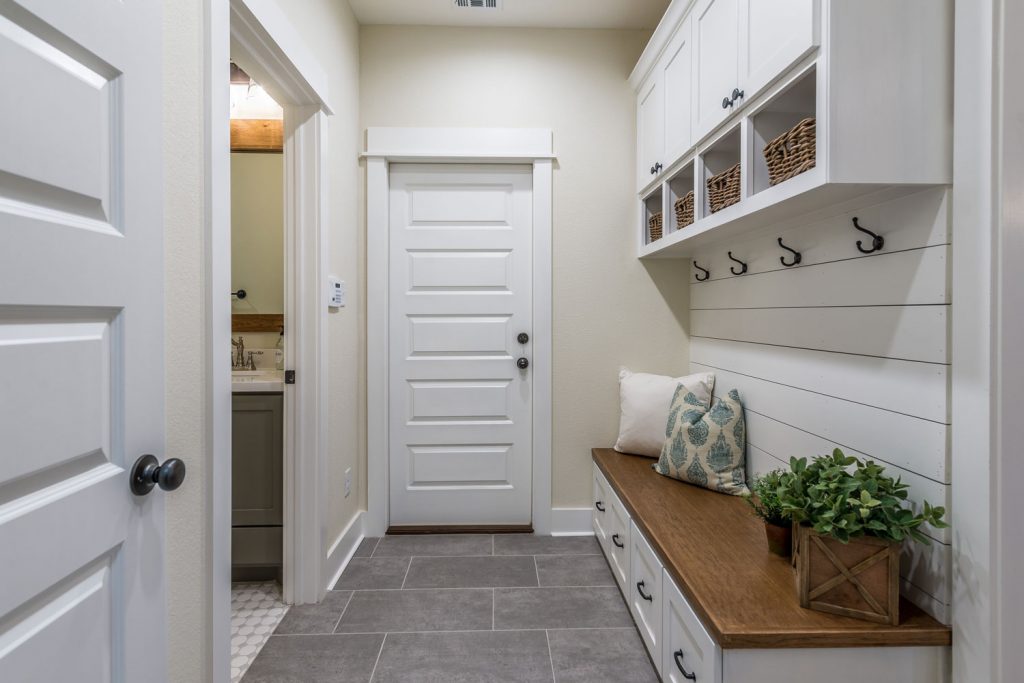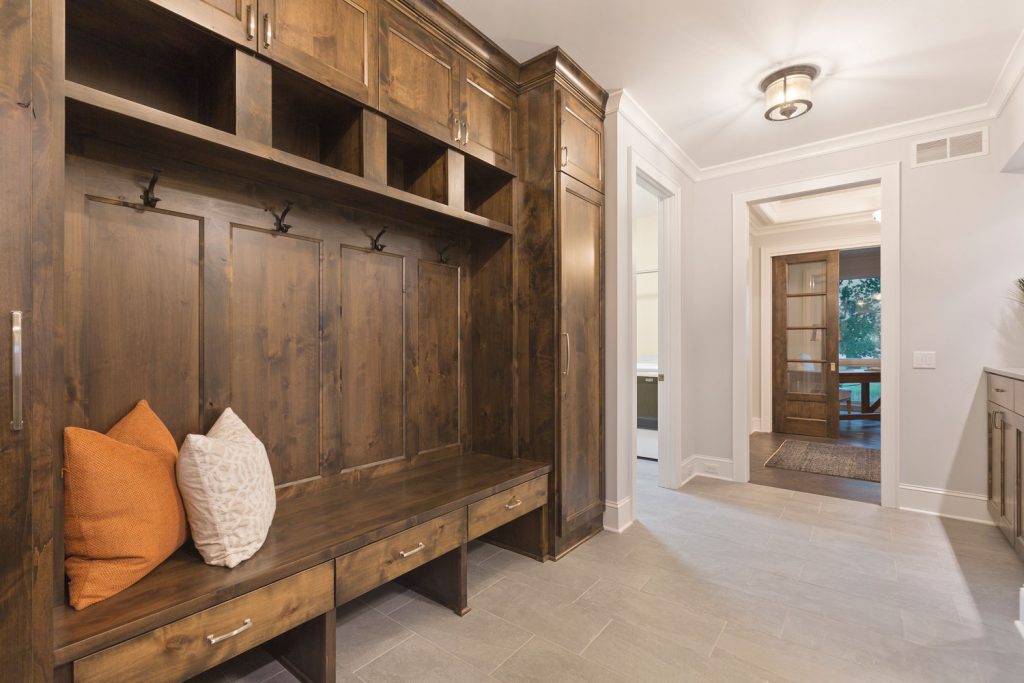The mudroom is an excellent addition to any home, especially those in rural areas, but homeowners may overlook the need for insulation in these areas until they're pulling their coats and boots off in cold temperatures. You don't want to make that mistake. So how do you insulate your mudroom? We've done the research to give you some guidance.
You can insulate your mudroom by sealing entrances, sealing the walls, installing insulation, and installing flooring that absorbs heat.
Now we've given you some basic ways to make this happen, and maybe you already have an idea of how to do these things. On the other hand, you may need more instructions, and that's OK! Keep reading to learn more!

Insulating Your Mudroom
When you imagine yourself coming home from a long day, we're sure it isn't into a freezing cold or unbearably hot room. That's why it's so important to insulate your mudroom. Some people think of them as just an extension to the garage, an area that doesn't need to be heated or cooled.

However, nothing could be further from the truth. Insulating this room, even if it isn't reached by the central heat and cooling system, will greatly add to the comfort of your everyday life. We'll talk about the best ways to insulate your new or existing mudroom.
Sealing Entrances
Since mudrooms are always directly accessed from the garage or outdoors, that means the entrance will be the only barrier against cold winds or hot, humid air. So let's talk about how to better insulate this aspect of the mudroom.
First, you should choose a door that has proper, built-in insulation. That means purchasing and installing a door that is described as an "exterior" door. Doors that are created for the indoors, such as what is installed in bedrooms, can be used, but they are not manufactured with insulation.
Exterior doors are equipped with insulating cores. Still, some exterior doors are better equipped than others. The best type is polyurethane foam which has an R-value (the measure of thermal resistance) of 2.81. Honeycomb cardboard cores, on the other hand, are less effective, with an R-value of 1.80.
Even after you have a great door, you need to be sure that it's properly sealed. There are two ways to do so. One way is to add weatherstripping. This will seal the edges of the door to ensure that air is not allowed to seep in or out.
Weatherstripping can be purchased in a wide variety of materials and installation methods. It can be found as metal, plastic, vinyl, rubber, and felt.
Some are made to be nailed or screwed on while others are self adhesive. What you choose depends on your needs and how long you would like the weatherstripping to stay attached.
Take a look at this weatherstripping on Amazon.
You should also add a draft stopper. These come in many different forms. Some are simply fabric tubes that can be laid against the threshold. Others are plastic or vinyl and can be slid underneath the door. Then there are the metal draft stoppers that can be screwed into the door for a more permanent fix.
Check out this draft stopper on Amazon.
Sealing The Walls
If you have any openings in the walls or joints of your mudroom or exterior walls, this will allow air leaks which will counteract the insulation. These are not always obvious, especially in garages to which mudrooms often are connected. So do a very thorough assessment of your walls, inside and out.
Then work to air seal your walls. If this is a big job, you can coat the wall with a sealant or surface sealer. If it's just a couple of small cracks or holes, you can use caulking.
Take a look at this insulating foam sealant on Amazon.
Installing Insulation
Perhaps the most obvious yet most time-consuming way to insulate your mudroom is to install insulation inside your walls. This can be a big project, but it's definitely worth the effort to have a comfortable room.
You can purchase batt, rolled, or loose-fill insulation for this project, depending on which method of installation appeals to you. For those who are installing insulation without any previous experience, it's recommended to opt for pre-cut batt pieces.
Cellulose and fiberglass insulation are both excellent for this type of area, and they are each easy to work with. As for R-values, it's recommended to choose insulation with a thermal resistance of R-13 to R-15. This will keep warm air in while also allowing a bit of air movement.
Warm Flooring
When a person comes in from working out in the snow and pulls off their boots, the last thing they want to do is step out onto a cold floor. So this is our fourth suggestion—install flooring that will be warm.
Of course, carpet isn't what's best for this type of room even if it is the warmest type of flooring there is. So what are your other options?
First, let's talk about what you don't want. Stone, tile, or concrete are types of flooring that absorb and conduct heat energy. So, they move the heat rather than radiate it. In other words, these are not warm flooring options.
Vinyl, on the other hand, is an alternative flooring choice that has become very popular in recent years. Not only will it help to keep the room feeling warm but it's also easy to clean, and it can be purchased in any style.
Whether you want it to look like tile, marble, or wood, there is a vinyl product out there for the look you're trying to achieve.
Take a look at these vinyl floor tiles on Amazon.
If you really want true tile or stone, you can also look into radiant heating. This is a heating element that is installed over the substrate before the chosen flooring material is placed. This will make even these types of flooring radiate heat in the coolest of conditions.
Questions About Installing Insulation

Installing insulation in your walls can be a confusing and overwhelming undertaking, especially in a room that's already built. So we'll answer a couple of the most frequently asked questions on this subject.
How Do You Insulate An Already Built Wall?
You can insulate a wall that is already built by blowing the insulation into the wall through a hole. Using a large hole saw, a hole large enough for an insulation blower hose must be made in the drywall.
Then, you must push the hose through the hole, pointing the nozzle downward and ensuring that it is well into the cavity between wall studs.
Blow in the chosen insulation material until you can feel the tip of the nozzle is firm against the material. This indicates that no more insulation can be blown in this area. This must be done between every set of wall studs to fully insulate the wall.
Can I Put Insulation Over Drywall?
If necessary, you can install 1- or 2-inch rigid foam insulation sheets over existing drywall. Following this, you can cover up the insulation with yet another layer of drywall.
This will not be as effective as insulation inside walls, but it will aid in keeping the room warmer and energy costs lower.
Soundproofing Your Mudroom

Keeping your mudroom warm is typically the greatest concern, but it also may be nice for the room to be a nice sound barrier against the outdoors as well. We'll answer two of the most frequently asked questions about using insulation to reduce noise.
Will Adding Insulation Reduce Noise?
Yes, insulation not only resists the movement of heat but also absorbs and blocks sound waves. If your mudroom is well insulated, it will not only block noises from the outdoors but will also help prevent noises from traveling from space to space.
What Type Of Insulation Is Best For Noise Reduction?
Mineral wool is the best type of insulation for soundproofing. This is because its STC (Sound Transmission Class) rating is 45, the highest out of all insulation types. It's incredibly dense, meaning that it not only absorbs sound waves but successfully blocks them as well.
Following close behind mineral wool in noise reduction is fiberglass insulation. This type has an STC rating of 39. This type is less likely to block low-frequency noises, but it will still effectively keep noise at a minimum.
In Closing

Insulating your mudroom is a must for a comfortable transition from outside to inside. We've discussed the best ways to insulate this area of your home, including sealing your entrance and walls, installing insulation, and choosing warm flooring. We hope that this information will help you make your space pleasant and welcoming.
Want to learn more about insulating areas of your home? Visit these related posts:




